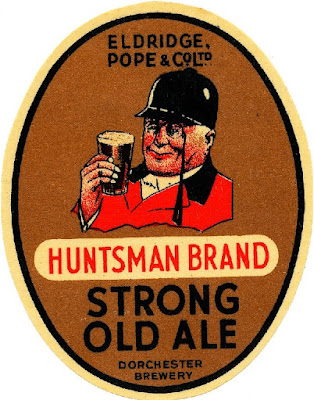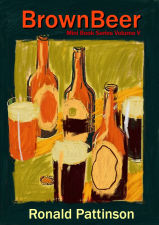A curious and interesting anniversary was celebrated at Berlin on the first day of the current month. It was nothing less than the seventieth anniversary of the introduction of Bavarian beer into the capital of Prussia, and, as the Daily Telegraph observes, this was no ordinary fete day, inasmuch as "it records an immense revolution in the bibulous habits and tastes of a very thirsty section of a notoriously absorptive race of people.” There is probably no unduly imaginative notion set afoot, when one declares that beer has played a great role in drawing the peoples of North and South Germany into close political and social union. When Herr Goschenhofer started his Bavarian beer brewery in Berlin, that is to say, in the year 1829, the political relations, existing between Prussia and Bavaria were, to use the language of diplomacy, somewhat strained, and the since realised dream of a United Germany appeared almost impossible of realisation.
The Brewers' Journal vol. 35 1899, September 15th 1899, page 530.
1829 seems very early to me for the first Lager brewery in Berlin. I'm sure I used yo have the dates for the first bottom-fermenting breweries in North Germany. Where the hell did I put that?
It seems that there were a few more Berlin Lager brewers in the first half of the 19th century.
During the interval between 1829 and 1850 some three or four Bavarian beer breweries appear to have sprung up, and to have commanded very fair business, but the real beginning of the general taste for South German beers dates from the years 1870-71, when the united German armies beat the French, and when the little “blue devils” of Bavaria enforced upon their superior Prussian comrades the respect they were entitled to by reason of the genuine prowess and bon camaraderie they everywhere displayed throughout that terrible campaign.
The Brewers' Journal vol. 35 1899, September 15th 1899, page 530.
Unification would obviously give a boost to Bavarian beer in the rest of Germany as lots of trade barriers were removed.
In a work indited by the late Henry Vizetelly, and entitled "Wines of the World,” we find the beers of Berlin thus described:— "Besides its weiss Bier,” says Vizetelly, writing in 1875, "Berlin is celebrated for its Baierisch Bier, brewed according to the Bavarian method, as well as its bitter, braun, josty, and weizen Biere. The bitter beer is very thin, whereas the brown beer is thick and often sweet. The josty beer, which takes its name from its brewer, has a flavour of herbs, and the weizen Bier, brewed like the weiss, from wheat malt, dispenses altogether with hops.”
The Brewers' Journal vol. 35 1899, September 15th 1899, page 530.
Odd that a book on wine should describe the types of beer brewed in Berlin. I'm wondering what is meant by "weizen Bier". It seems to be another type of wheat beer. I can't remember hearing of another type of Berlin wheat beer. Especially one without hops.
In all probability Bismarck set the fashion of drinking Baierisch bier; at all events, the custom of imbibing luscious draughts has so much increased that Berlin stands first in point of production of any town in the Fatherland. There are twenty large breweries, producing in the course of the year 2,805,000 hectolitres of beer. As a country Bavaria takes the lead in Germany, considered from the point of view of beer production, inasmuch as 16,000,000 hectolitres are annually brewed, the larger proportion being turned out from the splendid establishments at Munich. It will be of interest if we quote the figures representing the amount of alcoholic liquors produced in Germany in the course of a year. Beer, 61,000,000 hectolitres; wine, 32,000,000 litres; and 230,000,000 litres of brandy represent the amount required to assuage the thirst of that eminently thirsty nation. This means, as regards beer, 235.8 litres per head per annum in Bavaria ana 206 litres in Berlin. The inhabitants of Munich consume 566 litres per head annually, a record it would be hard to beat.
The Brewers' Journal vol. 35 1899, September 15th 1899, page 530.
Those consumption per head figures are totally crazy. 566 litres is more than ten litres a week. Given that there must have been people who drank little or no beer, there also must have been plenty of drinkers knocking back three litres or more every day. Just as well Lager wasn't really intoxicating.
The figure for wine production doesn't look right. I think it's more likely 30 million hectolitres, rather than litres.
The consumption of lager in this country appears to be but a mere drop in the ocean as compared with the home-brewed article, inasmuch as the first six months of the year only indicate imports of lager at the rate of 50,000 barrels a year, yet in the face of the facts we have stated as to the ever-growing popularity of beers brewed on the Bavarian system in Berlin, we should hardly like to say that it is impossible that lager may grow in public estimation in London, and England generally, especially if the price is moderate and the liquor good. The experiment is to be tried, and its issue will be watched with no common degree of interest by every brewer, in almost equal measure, in fact, as by the enterprising Burton firm who are taking up the production of this much-vaunted “conversational ale.”
The Brewers' Journal vol. 35 1899, September 15th 1899, page 530.
Lagers may have been growing in popularity, but the quantities consuned were still tiny. And would remain so for a long while. Possobly because the price of Lager remained much higher than that of other beers.
The last section clearly refers to Allsopp and their purchase of a Lager plant. And their experiment in brewing certainly didn't work out. They only brewed Lager in Burton for around a decade, the plant then falling into disuse. And was eventually moved to Arroll in Alloa.




















































































